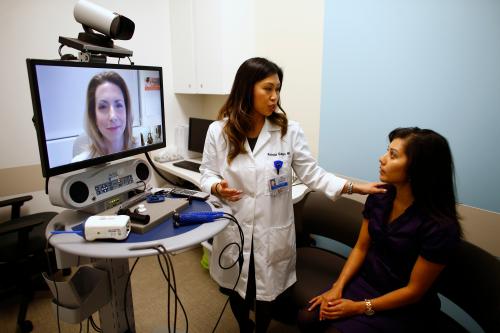The United States has long struggled with a health care system that is both expensive and often inaccessible when it comes to providing certain populations with equitable care. The White House and Congress acted quickly to transition patients to telehealth during the height of the COVID-19 pandemic. However, the future adoption and use of telehealth will depend on how the U.S. health care system addresses coverage and reimbursement, medical licensure, and service modalities. Equally important is policy coherence, or a “telehealth 2.0 roadmap”, to effectively harmonize the goals of value-based care, health disparities, and digital access. This approach to telehealth can improve patient outcomes, offer more inclusive telehealth adoption, and increase ways in which health care is delivered and received as the nation continues to mitigate the public health crisis.
In this paper, we propose flexibilities within the current health care system that accommodate the changes imposed by new technologies, as well as continued government incentives to drive more competitive options and alternatives for health care delivery. In the end, we argue that government must continue to promote the use of remote health care and leverage national investments in broadband infrastructure to drive the complementary use of telehealth with traditional health care. We also propose that current modality flexibilities remain in place, especially as the nation undergoes efforts to close the digital divide. Finally, telehealth must be positioned and implemented in coordination with value-based payments to ensure patient access to meaningful care that can be bolstered and not substituted by existing and emerging health care technologies.
-
Acknowledgements and disclosures
The authors acknowledge the expert contributions of telehealth and health care professionals in the development and review of the report. We also acknowledge the research assistance of Emily Skahill and Brooke Tanner. Amazon and Walmart are general, unrestricted donors to the Brookings Institution. The findings, interpretations, and conclusions posted in this piece are solely those of the author and not influenced by any donation.








